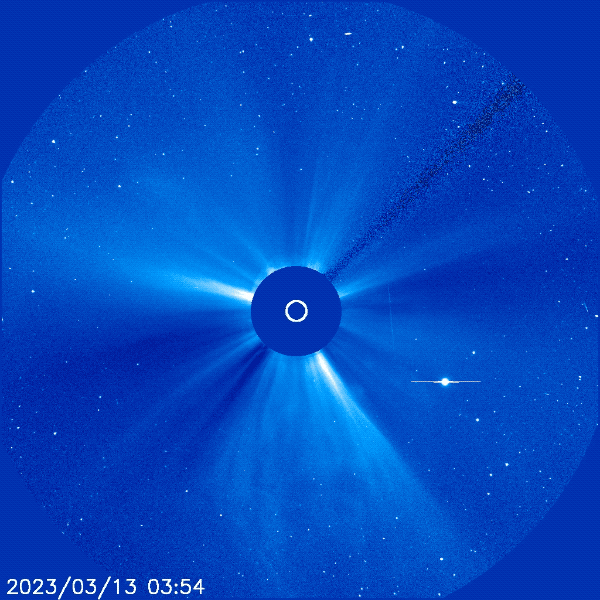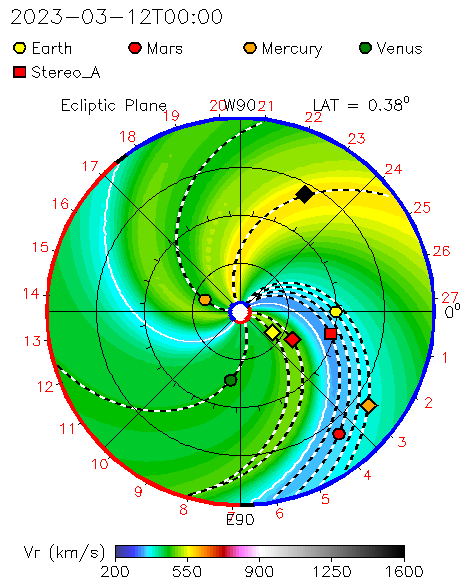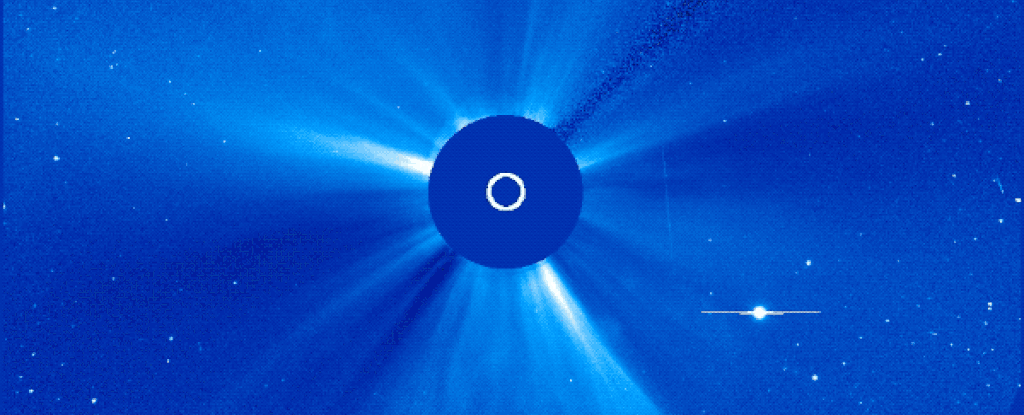The Sun has been spitting out some pretty powerful eruptions in the last few weeks, but one that took place a few days ago is a real doozy.
On March 12, Sun-monitoring spacecraft recorded a huge amount of material blasting away from the far side of the Sun from a coronal mass ejection. Detected as an expanding cloud, or halo, of solar debris, it raced away from the Sun at exceptionally high speeds of 2,127 kilometers (1,321 miles) per second.
The Sun spitting out flares and coronal mass ejections is nothing new, but this one was something special.
Usually, eruptions on the far side don't tend to hit Earth, since they're facing the opposite direction; but this one was so intense that satellites orbiting our planet picked up the signal of particles from the eruption accelerated by the eruption's shockwave right into our corner of space.

It might seem like the Sun has been getting up to some shenanigans recently, and, well, it has. It's heading into the peak of its cycle – a roughly 11-year loop in which the Sun's activity peaks and declines. We're heading for solar maximum, likely in the next year or two, when the Sun is most active, crawling with sunspots and erupting with powerful flares.
These cycles are linked to the Sun's magnetic field, which reverses polarity every 11 years, although why it does so is something scientists are still trying to figure out. This polar flip takes place at solar maximum; the magnetic field at the poles weakens to zero, then re-emerges with the opposite polarity. North becomes south, south becomes north.
During this time, sunspots appear in large numbers. These are temporary patches on the Sun with stronger magnetic fields, the lines of which often tangle, snap, and reconnect. When this occurs, a tremendous amount of energy is unleashed in the form of a solar flare. These can sometimes produce coronal mass ejections, in which tons of material and magnetic fields are ejected from the Sun out into space.
At time of writing, there are around 100 sunspots currently on the Sun, some of which are clustered into sunspot regions. Some sunspot regions can last a long time, repeatedly flaring, before disappearing from view as the Sun rotates.

A few days prior to the recent CME – given the unusual designation of R-type, for rare – a particularly active sunspot region rotated around to the far side of the Sun. Before it disappeared on 4 March, the region named AR3234 emitted (in ascending order of power) 49 C-class flares, 12 M-class flares, and 1 X-class flare – the most powerful kind of eruption of which our Sun is capable.
Whether AR3234 was responsible for the R-type flare is not known; it's certainly plausible. But solar scientists are definitely keen to know more about it.
Luckily, the Parker Solar Probe was right in the line of fire for the CME. It sent back signals to Earth telling Parker engineers that its systems are nominal; now we just have to wait for the next download of Parker's data to read measurements of the flare. That will take place after 17 March, when the probe is due for a close solar flyby.
In the meantime, we can only hope other solar observatories, such as NASA's Solar and Heliospheric Observatory (SOHO) and Solar Dynamics Observatory (SDO), and the European Southern Observatory's Solar Orbiter (which recorded a powerful far-side coronal mass ejection last year), also collected a significant amount of data on the event.
It will be nice to learn more about what our Sun gets up to when it thinks we can't see it.
